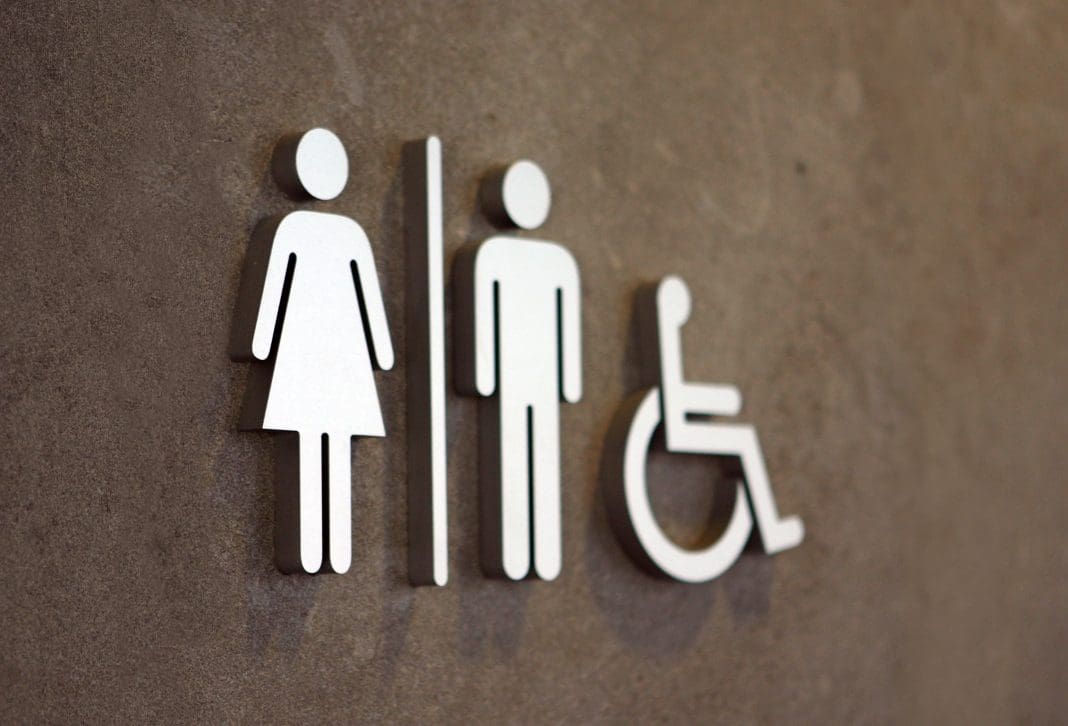About Access‘ Ian Streets outlines the training needed for an access auditor when assessing bathroom accessibility
Contrary to widespread belief, you can’t find everything you need online.
Time will tell whether AI will fill any gaps, but our experience of a recent project working with an access auditor highlights the importance of on-the-spot human know-how.
The job involved conducting design reviews of accessible bathrooms, loos and showers. It followed the delivery of some access audits which we’d conducted and which reported that facilities were not always being designed and fitted out correctly.
The job was a good opportunity to train a new access auditor
The site was a multi-let office block in London and, as a fairly straightforward project where we’d already identified the issues, it was the ideal first step in conducting a design review.
About Access specialises in accessible design and training auditors, so we were able to set the trainee up with the resources needed. We showed them the plans and told them where they could find the appropriate guidance, then left them to examine the design and conduct a review.
Access audits should not simply be lists of guidance- it should reflect what the site achieves and where it falls short
Unfortunately what came back to us was basically a copy and paste of the guidance which the client themselves could have found online without a great deal of trouble.
The completed report was not suitable so we had to do it again. But the process raised interesting points about the sort of elements that can easily be omitted if someone lacks experience.
The most important part of an access auditor’s job is to make sure the design review or access audit they are producing is usable. You should not provide the sort of information which means the client then has to go and review their own design – they are asking you to review it as part of your work.
You should source the guidance, then apply it to their design and show there they have hit the mark and where they have fallen short. But unfortunately the trainee had not grasped that.
Bathroom accessibility is a key area that is often overlooked
Providing an accessible WC shouldn’t be that difficult. The key is to envisage the sort of issues a disabled person might face in using the facilities, and in doing that make the process of going to the loo as hassle-free as possible. You can work out most of that sitting down!
Starting points are to make sure there is the appropriate signage – which itself should be accessible – and that the door is wide enough for a wheelchair-user to negotiate.
Consideration should be given to each and every one of the facilities inside the cubicle. Is there enough space for the user and for their mobility equipment? And what if they’ve got bags or luggage?
The position of the toilet is important. It should be close to a wall, enabling the user to take support if necessary. It should also be within easy reach of the wash basin, soap dispenser and paper towels.
You should also consider the different impairments of the various people who will want to use the accessible WC, and how the design can ensure no individual is at a disadvantage.
It is also worth remembering that some disabled people are capable of using any WC, but the features within a single sex washroom can create difficulties for anybody to use.
Never underestimate the steps needed to maximise accessibility
Taps are available in a variety of shapes, sizes and mechanisms and can present a wide range of challenges.
If they are twist taps are they too difficult to be used by people have poor manual dexterity? If they are taps that you push down, do they present a problem for people who cannot exert much force? Some have a push top that you also turn to regulate the water temperature. Where taps are fitted with motion sensors, how does a blind or partially sighted person locate the sensor?
Also, while a person is standing in front of the hand basin can they reach the soap dispenser and operate it with one hand? Someone with walking aids might go to the sink and rest their sticks against the front of the basin, but they might then have to use their wet hands to grasp their sticks and go to another part of the room to reach the dryer.
Access auditors should consider how the site operates as a whole, not just as individual rooms
If the design is lacking in any of these areas then the access auditor’s review should highlight the deficiencies so they can be rectified – but it’s also important to look beyond the drawings.
A good diagram will show the location of the various facilities. It will also indicate how far they are from each other, and it will show the general dimensions of the space.
But there are other elements which a drawing can’t show and which the access auditor should anticipate.
The report should advise a client that people with certain types of impairment can experience difficulties with some forms of lighting, surface finishes and a lack of tonal contrast, and it is important to bear these in mind as the project progresses towards completion.
Being an access auditor is a thorough but rewarding role
So we’ll move on to the next learning experience for the trainee and do what we can to help them succeed in a little-known role.
You don’t have to be disabled to do it, and it’s something you can learn. Key skills include the ability to understand buildings, people and law.
Plus an aptitude for studying the small print of planning reports and other documents, regulations and guidance – and applying it.















Hello,
I’d like to add to the discussion on accessible toilets or bathrooms. To me many so called accessible toilets or bathrooms are NOT accessible. Why? I experience claustraphobia or cleithrophobia. What makes accessible toilets non-accessible for me and others if the fear that when inside the lock will break or jam and we wont be able to get out which is our worst fear. The solutions (and some accessible toilets have these) is a simple, easy to see, locking mechanism or bolt. Plastic bolts which could be broken in a time of panic would be great. Lets remember that access means access for all. Its not just about restricted mobility.